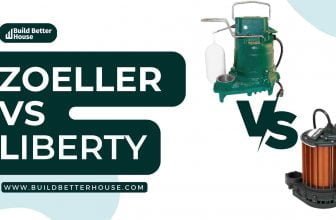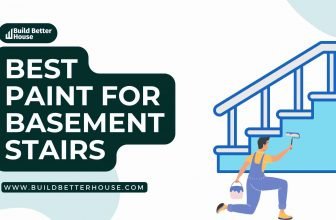5 Best Moisture Meters For Your Drywall Needs

Drywall is a staple in modern construction but is not immune to moisture damage. Moisture can seep into drywall, causing swelling, warping, and mold growth. That’s why having the best moisture meters on hand is essential to detect any potential issues before they become significant problems.
In this article, I will share the 5 best moisture meters for drywall needs. Whether you’re a DIY enthusiast or a professional contractor, I’ve got you covered.
FAQs on 5 Best Moisture Meters For Your Drywall Needs
1. What is the ideal moisture content for drywall?
The ideal moisture content for drywall is typically between 5% and 12%.
2. Can I use a moisture meter for drywall on other materials?
Yes, many drywall moisture meters can be used on various materials, including wood, concrete, and insulation.
3. How do I know if my drywall has moisture damage?
Signs of moisture damage in drywall include discoloration, peeling paint, musty odors, and visible mold growth.
4. Can I use a moisture meter for drywall on painted surfaces?
Yes, you can use a moisture meter for drywall on painted surfaces. However, you may need to remove some of the paint to get an accurate reading.
Best Moisture Meters: Top 5 On The List!
| Product | Features | Rating | ||
| General Tools MMD4E | Weight: 3 oz. (86g)Power source: “9V” battery (included)Dimension : 6.0 x 2.6 x 0.8 in. (152 x 66 x 20 mm) | ⭐⭐⭐⭐⭐ | Check Price | |
| MMD7NP | Operating temperature: 32° to 122°F (0° to 50°C) <80% RHWeight (without battery): 5.4 oz. (152g)Power source: “9V” battery (included) | ⭐⭐⭐⭐ | Check Price | |
| General Tools MMH800 | Operating temperature: 32° to 122°F (0° to 50°C) <80% RHWeight (without battery): 4 oz. (115g)Power source: “9V” battery (included) | ⭐⭐⭐⭐ | Check Price | |
| PerfectPrime IR0280 | Battery life: 6hrsStorage temperature: -20°C ~ +60°C (-4°F ~ 140°F)Image capturing frequency: 9Hz | ⭐⭐⭐⭐ | Check Price | |
| FLIR MR160 | Thermal Image Resolution: 4800 pixels (80 × 60)Pin Moisture Groups: 9 material groupsDimensions (H x W x L): QVGA (320 x 240 pixel) 2.3″ 64k color TFT | ⭐⭐⭐⭐ | Check Price |
What Is A Moisture Meter and Why Do You Need One For Drywall?
A moisture meter is a device that use to measure the moisture content in various materials, including drywall.
It is an essential tool in the construction and renovation industry, especially for those who work with drywall regularly, as moisture can cause significant drywall damage, leading to mold growth, structural issues, and costly repairs.
The best moisture meters help you detect any leaks or amount of moisture in your drywall, allowing you to take the necessary steps to prevent damage, maintain the integrity of the wall and ensure its longevity.
Types Of Moisture Meters
There are three main types of moisture meters. Each type has advantages and disadvantages, and your choice will depend on your specific needs and preferences.
Pin Moisture Meters
Pin moisture meters are the most common type of moisture meter used for drywall. They use two pins that penetrate the wall’s surface to measure the moisture content in the interior. Pin moisture meters are accurate and can measure moisture content up to 5/8 inches deep in the wall.
One significant advantage of pin moisture meters is that they can detect moisture in various materials, including wood, concrete, and drywall. They’re also relatively inexpensive, making them popular among contractors and homeowners.
However, pin moisture meters do have some drawbacks.
For example, they leave two small holes in the wall, which may not be desirable in some situations. They’re also more invasive than other types of moisture meters, requiring you to penetrate the wall surface to take a reading.
Pinless Moisture Meters
Pinless moisture meters are another type used for drywall. As the name suggests, they don’t require any pins to take a reading. Instead, they use electromagnetic signals to measure the moisture content in the wall.
Pinless moisture meters are non-invasive, meaning they don’t leave any holes in the wall. They’re also easy to use and can quickly provide moisture measurements for large areas of drywall. They can detect moisture in ceiling tiles or other areas with limited access.
However, pinless moisture meters are generally less accurate than pin moisture meters, and they can only measure moisture content up to 3/4 inches deep in the wall. They’re also more expensive than pin moisture meters, which may be a consideration for some people.
Combination Moisture Meters
Combination moisture meters are a hybrid of the pin and pinless moisture meters hybrid. They have pins and a non-invasive scanning mode, allowing you to take accurate moisture measurements in various situations.
Combination moisture meters are versatile and can use for various applications, including drywall, wood, and concrete. They’re also very accurate, providing precise moisture measurements up to 5/8 inches deep in the wall.
However, combination moisture meters are generally more expensive than pin or pinless moisture meters, and they can be more complicated to use. They’re also less specialized than other types of moisture meters, which can be a consideration if you only need a moisture meter for drywall.
Factors To Consider When Choosing The Best Moisture Meters
When choosing the best moisture meters for your drywall, you should consider a few key factors. These include accuracy, sensitivity, and range.
Accuracy
Accuracy is the most critical factor when choosing the best moisture meters for your drywall. You need a moisture meter that can provide accurate moisture readings, allowing you to detect any moisture issues in the wall.
Pin moisture meters are generally more accurate than pinless ones, but this can depend on the specific model you choose. Look for a moisture meter with a high level of accuracy, preferably one that has been tested and approved by industry standards.
Sensitivity
Sensitivity is another crucial factor to consider. Consider a moisture meter that can detect even small amounts of moisture in the wall. This is particularly important if you’re dealing with a small area of drywall, as you want to avoid any moisture issues that may be present.
Pinless moisture meters are generally more sensitive than pin moisture meters, but this can depend on your chosen model. Look for a moisture meter with a high level of sensitivity, ideally one that can detect moisture content as low as 0.1%.
Range
Range refers to the depth at which a moisture meter can detect moisture in the wall. Pin moisture meters can typically measure moisture content up to 5/8 inches deep in the wall, while pinless moisture meters can only measure moisture content up to 3/4 inches deep.
If you’re dealing with thick drywall or other materials, you may need a moisture meter with a deeper range. Combination moisture meters can typically measure moisture content up to 5/8 inches deep, making them a good choice for most drywall applications.
5 Best Moisture Meters For Drywall
Ever wonder what happens in your home behind the drywall or hardwood floors? Find out with the help of these best moisture meters! Read on to find the best moisture meters available for your drywall needs.
General Tools MMD4E
The General Tools MMD4E is a pin-style moisture meter that is simple to use and has an LCD screen with comprehensible values.
This stainless steel pin will give you precise readings on the moisture levels in drywall, wood, concrete, and sub-flooring. In addition to providing you with the percentage readings for the moisture content, MMD4E also indicates whether it is low, mid-range, or excessive, just in case you are unsure of the permitted moisture percentage range for the item you are testing.
A 9-volt battery (included) powers the MDD4E, automatically turning off after 3 minutes of inactivity. It is the best low-cost pin-type moisture meter on the market and is high-quality equipment with consistently positive reviews.
The product weighs 0.18 pounds and measures 6.0′′ x 2.6′′ x 0.8′′.
MMD7NP
The MMD7NP is a pinless moisture meter that measures moisture depths up to 3/4″ without puncturing surfaces.
It works well on all types of wood, drywall, and brick surfaces. It features a powerfully brilliant LCD screen that makes the readings visible from all angles, a low battery indicator, a HOLD button, an out-of-range warning, auto-calibrating, and a useful auto power-off function to save battery.
The MMD7NP has dimensions of 1.13′′ x 3′′ x 6.5′′, weighs 0.25 pounds, and is powered by a 9-volt battery (included).
General Tools MMH800
The General Tools MMH800 is an all-in-one moisture meter that can also serve as a pin-type or pinless moisture meter.
In addition to detecting moisture levels, it is recognized for its remarkable precision and the ability to pinpoint the exact location of leaks.
The product features a HOLD and auto-off mode, recognizing and displaying ambient temperatures and humidity. The MMH800 is a popular moisture meter among building inspectors and others who work on flood damage.
The MMH800 also comes with a lanyard, two extra sets of pins, and a 9-volt battery and the product is 1.95 pounds and is 3.63′′ x 8.13′′ x 12′′.
PerfectPrime IR0280 Thermal Imager
The PerfectPrime IR0280 is a thermal imaging camera that combines a real-time thermal image with surface temperature monitoring.
With a 32 x 32, 1024 px touch screen, the IR0280 displays heat signatures on and below surface areas. With temperatures as low as -22 °F (-30 °C) and as high as 1832 °F (1000 °C), it can conduct a comprehensive analysis.
The android operating system of PerfectPrime IR0280 powers the thermal imager software, which regularly updates with new features. Moreover, the product enables live streaming to a computer screen, where you can tap on the pixels to get the exact temperature data.
It employs a lithium-ion battery and is perfect for personal and commercial use.
FLIR MR160
Compared to the abovementioned PerfectPrime IR0280, the FLIR MR160 is a much more advanced moisture meter.
It contains an embedded pinless sensor and an external probe, allowing you to use it as a pin and pinless moisture meter.
It is a lightweight, small product that can easily fit into the tool belt and is durable enough to last many years. The FLIR MR160 comes with a fantastic ten-year warranty on the thermal detector and a two-year product warranty.
As for its thermal imaging capabilities, the product employs a Lepton thermal imager (80×60).and an IGM (Advanced Infrared Guided Measurement Technology).IGM is a highly useful function as it can determine the precise position of moisture spots.
The thermal imager has a 3.7-volt Li-ion rechargeable battery that powers it continuously for 18 hours, making it ready to use immediately. It measures 5.5 inches by 2.9 inches by 1.7 inches and weighs under 11 ounces.
The PerfectPrime IR0280 comes with a color wetness alarm, automatic image calibration, and the capacity to save up to 9999 thermal images. The product also has free FLIR reporting software, which you can use to analyze data and produce in-depth reports.
How To Use A Moisture Meter?
Using a moisture meter is a simple process, but following the instructions carefully is essential to ensure accurate readings. Here’s a step-by-step guide to using a moisture meter on drywall:
- Calibrate the moisture meter according to the manufacturer’s instructions. This involves setting the moisture meter to the correct scale for the material you’re testing.
- Take a reading on an area of drywall that you know is dry. This will give you a baseline reading to compare to other areas of drywall.
- Hold the moisture meter against the surface of the drywall, ensuring that the pins or scanning pad are in contact with the wall.
- Take a reading by pressing the pins or scanning the pad into the wall for a few seconds. The moisture meter will provide a reading of the moisture content in the wall.
- Repeat the process in several areas of the drywall, taking readings at different depths and locations.
- Record the readings for each area, comparing them to the initial baseline reading you took.
- If the moisture content in any drywall area is higher than the baseline reading, take steps to address the moisture issue.
Follow the tips mentioned above to get an accurate reading on your moisture meter!
Common Mistakes To Avoid When Using A Moisture Meter On Drywall
Using a moisture meter on drywall is relatively straightforward, but there are a few common mistakes you should avoid to ensure accurate readings. These include:
- Not calibrating the moisture meter according to the manufacturer’s instructions.
- Not taking a baseline reading on drywall that you know is dry.
- Not taking readings at different depths and locations on the drywall.
- Make sure you select the appropriate setting for the material you’re testing. Using the wrong setting can result in inaccurate readings.
- Make sure you insert the pins of the moisture meter at least ¼” into the material you’re testing.
- Make sure the material you’re testing is dry. Testing wet materials can result in inaccurate readings.
- Not waiting long enough for the moisture meter to take a reading can give false readings.
- Inserting the pins of the pin-type moisture meter too deeply can damage the material being tested.
By avoiding these common mistakes, you can ensure that you get accurate moisture readings and detect any issues with your drywall.
Maintenance And Care Of Moisture Meters For Drywall
Proper maintenance and care of your moisture meter are essential for ensuring accurate readings and extending the life of the device. Here are a few tips for maintaining and caring for your moisture meter:
- Store your moisture meter in a cool, dry place when not in use.
- Clean the pins or scanning pad regularly to ensure accurate readings.
- Check the calibration of your moisture meter regularly to ensure accurate readings.
- Replace batteries as needed.
- Follow the manufacturer’s instructions for proper use and care of your moisture meter.
By following the above tips, you can be sure that your moisture meter for drywall is in good condition and provides accurate readings for years to come.
Signs Of Moisture Damage To Look For!
Moisture damage in drywall can be difficult to detect until it has become severe. However, there are some signs that you can look out for that may indicate moisture damage. These include:
- Sagging or warping drywall
- Cracks or holes in the drywall
- Discoloration or staining on the drywall
- Soft or mushy drywall
- Musty odors in the room
If you notice any of these signs, use a moisture meter to detect the presence of moisture in your drywall.
Similar Tutorials To Check Out!
- “How To Ventilate A Basement: 7 Effective Tips And Tricks”: Are you wondering how to ventilate a basement? Ventilating your basement is crucial for maintaining a safe and healthy atmosphere. This post will help you find how to ventilate a basement and some easy DIYs you can perform.
- “5 Best Home Improvement Stores Near You In 2023”: Do you want to know where to find the best home improvement stores? We’ve put together a list of the top home improvement stores to assist you in making a well-informed choice.
- “Extension Cord Chart: What You Must Know On Safety”: Ever wonder how to use an extension cord chart correctly and safely? Then this guide is for you!
- “How To Fix Clogged Shower Drain? Complete Guide”: A clogged shower drain is a major annoyance in the bathroom. It causes water to pool in the shower and can also produce an unpleasant smell. Fortunately, with a few simple steps and the correct tools, you can solve this problem quickly and efficiently.
Conclusion
Choosing the best moisture meters for your drywall is essential for maintaining the wall’s integrity, preventing moisture damage, and ensuring its longevity. When selecting the best moisture meters, consider accuracy, sensitivity, and range to ensure you get a product that meets your needs.
Following the tips in this guide, you can find the best moisture meters for your drywall needs and ensure that your walls remain healthy and intact for years.







very informative articles or reviews at this time.
Reading this blog was an absolute pleasure! It was filled with so much interesting information about farming classifieds that I almost felt like I was living in a rural area myself. From the basics of how to post an ad on a classifieds website, to the more complex topics like how to evaluate potential buyers, this blog was an absolute gold mine of knowledge. I especially enjoyed the humorous anecdotes sprinkled throughout the blog, which made the reading experience even more enjoyable. All in all, I highly recommend this blog to anyone looking to learn more about farming classifieds. It’s sure to be a great read!
Impressed by Conti’s far-reaching impact in the world of cinema.
I agree with you 100%. This is a really important issue.
I admire how you’re able to existing either side of an argument pretty.
Makaleniz açıklayıcı yararlı anlaşılır olmuş ellerinize sağlık
thanks for blog
There is definately a lot to find out about this subject. I like all the points you made